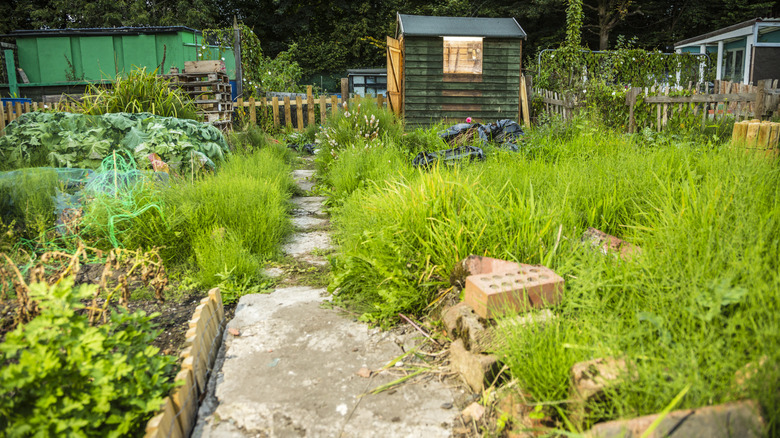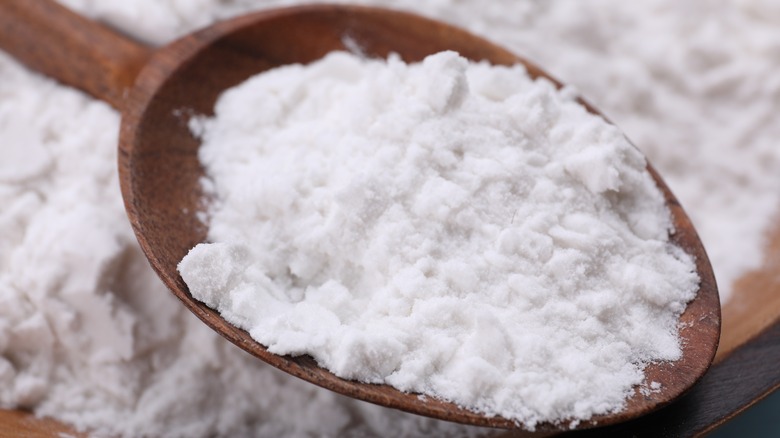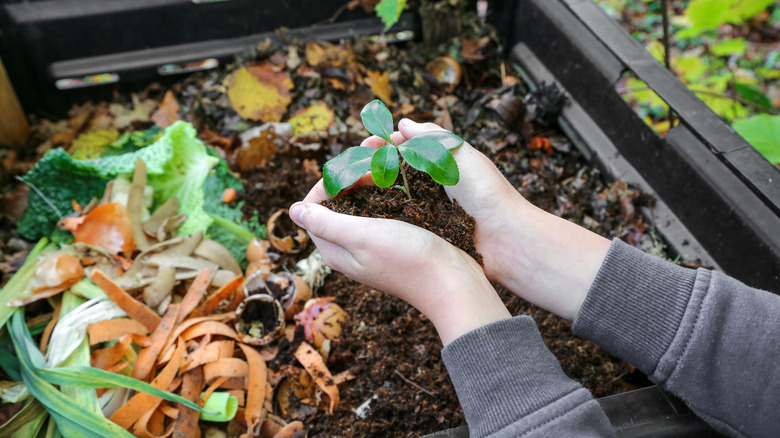Grab This Pantry Ingredient To Fight Nitrogen Pollution & Help Your Garden Thrive
Nitrogen, a chemical element, is present in all living things, and at the right level, supports the growth and development of your garden. Too much is a problem, though — one that can damage beneficial plants and damage the delicate ecosystem within that garden. If your garden is showing signs of too much nitrogen, such as healthy-looking, deep green foliage without expected fruit production, it's time to consider treatment options.
Nitrogen pollution occurs when too many nitrogen compounds are present, leading to overgrowth of plants that use up too many resources and could negatively impact wildlife. Often, this is brought on by overfertilization, a problem that easily occurs when gardeners try to enhance the level of nutrients present in the soil with the goal of increasing the amount of vegetables, fruit, or blooms produced.
A solution to this could be in your pantry: cornstarch. Using cornstarch in your garden is beneficial for various reasons. It helps seeds germinate and grow, can reduce water demand, and may even help remove powdery mildew on some of your plants. It may also help to reduce the risk of nitrogen pollution in your soil. Though this is a tough change to create in the average garden, a study published by Scientific Reports indicates there's a real opportunity to improve nitrogen levels using this everyday substance. So, why is cornstarch so helpful, and can you replicate this in your own garden?
How cornstarch works to reduce nitrogen pollution
Cornstarch is often used as a thickening agent when added to your favorite soup or gravy. In the garden, it works somewhat the same way. Cornstarch is helpful in numerous ways, including that it's biodegradable and eco-friendly, allowing you to use it without any real risk of damage to the plants there. It may even help control termites and some types of fungus.
In a study published by Scientific Reports, researchers worked to apply cornstarch to granules of fertilizer. They created a slurry — or a mixture of water and cornstarch that's typically still very liquid-like — and coated it on granular urea. Typically, granular urea is a type of nitrogen fertilizer that looks like tiny balls or granules. It's made up of a high concentration of nitrogen and is often used in garden fertilizers.
By doing this, the starch worked to create better nitrogen stability in the soil. The coating helped to slow down the release of nitrogen into the soil, and as such, it minimized the risk of too much nitrogen present at one time. This created a controlled release of urea into the soil instead of a huge boost all at once when the fertilizer was added. Remember, nitrogen is essential to the growth of plants, but at the right level and over time.
Adding cornstarch to your garden
The research study on using cornstarch for nitrogen control isn't one that's easily duplicated in a traditional garden setting, though it's very much possible. If you plan to add nitrogen-based fertilizer to your garden soil, coating it in a slurry of cornstarch theoretically could help to reduce the rate at which the nitrogen is released from the granules into the soil itself, reducing how much is available for the plant to absorb at one time. Though it's hard to say that this will reduce nitrogen present in your soil right now, it will at least slow the release of the new fertilizers you're adding.
Alternatively, there are some additional strategies you can take to better control nitrogen in the soil. Some of the most common causes of nitrogen pollution in local yards are the overuse of fertilizer, high amounts of pet waste left to decompose, and some types of cleaning agents. For that reason, if you pull back on any of these factors, you'll minimize the risk of having too much nitrogen present. It also may be wise to skip all types of synthetic fertilizers for your garden. Instead, use organic compost as a way to give your plants the nutrients they need to thrive. That includes your organic food waste from the kitchen, trimmings from your plants, and even your fall leaves. Also, consider avoiding the use of lawn fertilizers with nitrogen in them. Even in the lawn, they could seep into your garden.


